Back When Northridge Mall Mattered
August 1972 marked more than just another mall opening - it marked a bet on Milwaukee's north side. Northridge Mall arrived with four major anchors, two levels, and a movie theater tucked into the layout.
JCPenney, Sears, Boston Store, and Gimbels filled the corners. Developers tied it to a freeway that never got built and a housing project that never quite caught fire.
Still, for a while, the plan held. Shoppers showed up. Retail leases filled fast. The mall had its moment, and Milwaukee had something new to talk about.
Building a Retail Magnet
Northridge Mall didn't land by accident.
Taubman Centers and Senator Herb Kohl had their sights on a full-scale commercial footprint that could reshape Milwaukee's north side.
They rolled out Southridge Mall first in 1970, then turned north to break ground on Northridge Mall.
The promise was scale, 1.1 million square feet, four national anchors, and space for a theater, restaurants, and smaller chains all under one roof.
From the start, it was wired into a broader strategy.
The mall would sit next to Northridge Lakes, a housing complex aimed at the mid-to-upper-tier market.
Everything was supposed to connect through a northern beltline freeway, but that never happened.
Once freeway construction got blocked in the 1970s, that missing link forced shoppers to drive miles of surface streets just to get there.
Brown Deer Road wasn't built for it, and traffic patterns started working against the property.
Still, in August 1972, those cracks hadn't shown. Gimbels, Sears, Boston Store, and JCPenney moved in.
A United Artists triplex opened with first-run films and later expanded to six screens.
Retail tenants signed on, drawn by the scale and location.
At the time, it was the biggest mall in Milwaukee, and it was one of the top-ranked things to do in Milwaukee, Wisconsin, which helped bring early foot traffic through its doors.
Declining Traffic, Shifting Retail Patterns
By the mid-1990s, Northridge Mall had lost its momentum.
Younkers, which took over the Gimbels space by way of Marshall Field's and H.C. Prange Co., shuttered in 1999.
JCPenney closed in 2000. Sears followed in 2002.
These weren't just isolated exits, they were exits from anchor spots that had framed the mall since day one. The market had shifted.
Freeway access had always been limited, but by the late 1990s, shoppers had easier routes to Mayfair, Brookfield Square, and newer centers in Mequon and Menomonee Falls.
Brown Deer Road's slow traffic, plus a growing cluster of uncoordinated strip malls in the area, left Northridge Mall boxed in with no clean entry point.
Crime stories around the area didn't help. Though the numbers weren't especially high, local media leaned hard on coverage that shaped perception.
The mall's image changed faster than its tenant list could adjust.
Lease renewals dried up. By the early 2000s, most national chains had pulled out or were on their way.
Independent shops took up some square footage, but they didn't drive the same traffic or sales.
Footfall declined. By early 2003, the mall was down to a handful of operating units.
The final closure came later that year, with the entire interior sealed off.
United Artists had already exited. The theater, like the rest of the space, became a forgotten corner.
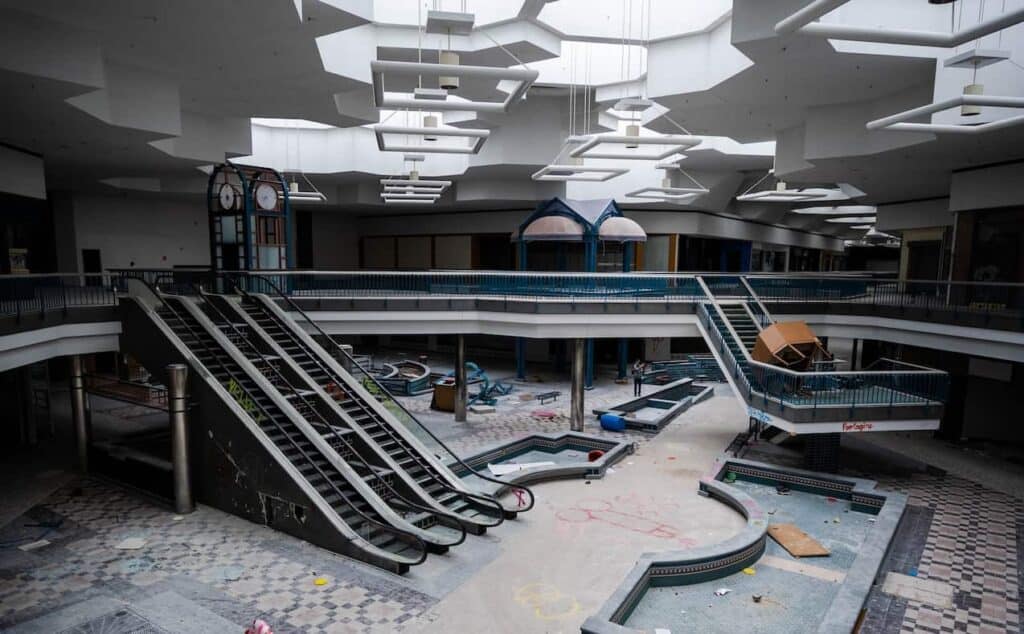
Ownership Stalls and Missed Redevelopment Deals
After the mall shut down, redevelopment was slow and uneven.
The former Sears site was demolished and replaced with a Menards and a Pick 'n Save.
Value City Furniture opened in a portion of the old Boston Store space in 2004.
That location closed in 2009. Pick 'n Save lasted until 2014.
In 2013, William Penzey of Penzeys Spices expressed interest in buying the entire mall property.
The plan was to move company operations to the site.
That deal fell apart in 2014 when U.S. Black Spruce Enterprise Group, an overseas investment firm, stepped in and made a last-minute payment to halt a foreclosure auction.
Black Spruce promised a large-scale Asian marketplace and office development.
That plan never moved forward. No permits were filed. Renderings circulated, but they were basic concept images, not attached to any viable blueprint.
The City of Milwaukee said communication with Black Spruce was strained.
Officials accused the company of dodging meetings, offering vague answers, and delaying responses.
Eminent domain was floated as an option, but it was held up in court.
Black Spruce kept current on taxes only when legal action became imminent.
By 2018, the mall was mostly empty and decaying. That year, MIR Tactical hosted an airsoft event on-site.
That use was temporary and commercial but didn't lead to new tenants or long-term planning.
Nothing else opened afterward. A demolition order finally came in April 2019 after inspectors cited safety issues inside the building.
Court Filings, Safety Hazards, and Forced Demolition
By 2019, Northridge Mall had passed beyond vacancy and into liability.
On April 11, the City of Milwaukee issued a demolition order after a series of code violations and safety inspections revealed unchecked hazards inside the building.
That summer, on July 22, a maintenance worker was electrocuted while inspecting an open fuse box on-site.
Emergency crews responded, but the incident pushed the city's case forward.
In May 2020, a Milwaukee County Circuit Court judge ruled that the property posed a danger.
The city moved ahead, but Black Spruce pushed back in court, delaying action.
While the mall sat idle, unsecured entry points multiplied.
In 2022, four separate arson fires broke out at the property.
The roof, already damaged, was patched with drywall, a temporary fix that did little to prevent the spread or protect responders.
Milwaukee Fire Chief said the mall's wide layout required crews from across the northwest side to respond.
Without working sprinklers or alarms, every call put added strain on the department.
The city returned to court, where Judge William Sosnay found Black Spruce in contempt.
By September 2, 2022, fines had reached $26,000 and were climbing.
City officials filed for control of the property again in January 2023.
In March, Phoenix Investors entered the picture with a redevelopment proposal, but in April, a judge rejected the city's request to take the site.
The standoff continued, but pressure on the ownership group increased with each missed deadline and unpaid citation.
State Grants, Public Spending, and the Granville Pitch
A breakthrough came on December 8, 2023, when Governor Tony Evers approved a $15 million grant to support the demolition of Northridge Mall.
That injection of state funding gave the City of Milwaukee the budget it needed to act finally.
Through a protracted court battle, the City of Milwaukee secured ownership of the section of Northridge Mall that had been held by U.S. Black Spruce Enterprise Group.
Legal resistance delayed progress for years, but by early 2024, the city had gained full control and began full-scale demolition.
The Boston Store wing, already owned by the city and cleared of asbestos by 2021, became the first target.
Demolition began on January 31, 2024. Crews removed materials section by section, starting with the portion most isolated from the main structure.
The work moved quietly at first, under a winter sky and behind a high fence, but it didn't go unnoticed.
Onlookers stopped by, some taking photos, others asking what would happen next.
The city had answers, though few were finalized. Plans to rebrand the site as Granville Station had already been announced.
The name came from the larger neighborhood district and hinted at a future focused on new businesses, job creation, and land reuse.
However, any actual development was still hinged on private interest, and that part remained uncertain.
Consultants flagged challenges, distance from major freeways, market softness, and area stigma.
Still, by March 2025, public meetings were underway.
City planners gathered input from residents, who mentioned mixed-use housing, green spaces, and light industrial ideas.
As of spring 2025, the former Younkers space had already been brought down.
The JCPenney structure was in progress. The city plans to issue requests for proposals by fall 2025.
Meanwhile, the 58-acre site sits under review, caught between its past as a retail hub and whatever comes next.
According to the city's redevelopment plan, the area, now branded as Granville Station, is expected to support a mix of residential, commercial, and light industrial use.
City officials describe it as a long-term anchor for job creation and neighborhood reinvestment on Milwaukee's northwest side.
Former anchors
| Store Name | Opening Year | Closing Year | Notes |
|---|---|---|---|
| JCPenney | 1972 | 2000 | |
| Sears | 1972 | 2002 | Demolished and replaced by Menards and Pick 'n Save |
| Boston Store | 1972 | 2003 | Replaced by Value City Furniture |
| Gimbels | 1972 | 1986 | Replaced by Marshall Fields |
| Marshall Fields | 1986 | 1988 | Replaced by H. C. Prange Co. |
| H. C. Prange Co. | 1988 | 1991 | Converted to Younkers |
| Younkers | 1991 | 1999 | |
| Pick 'n Save | 2004 | 2014 | |
| Value City Furniture | 2004 | 2009 | Occupied part of former Boston Store space |
🍀

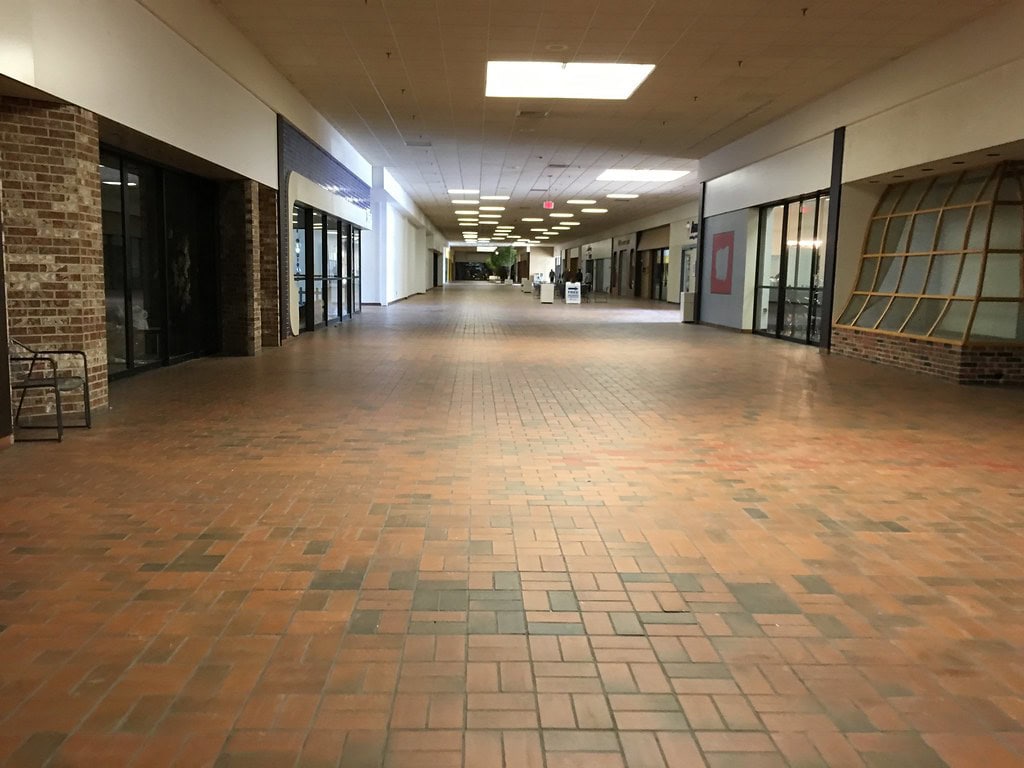
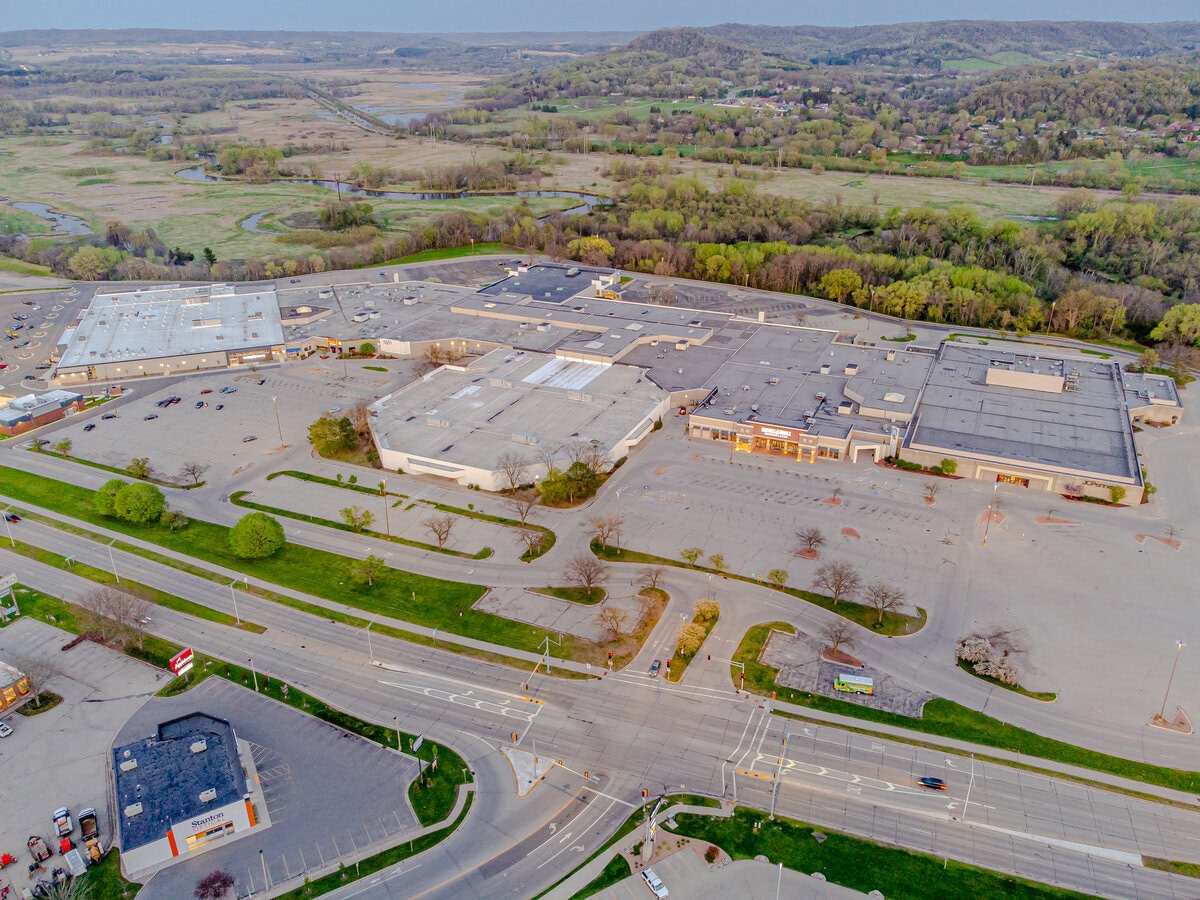
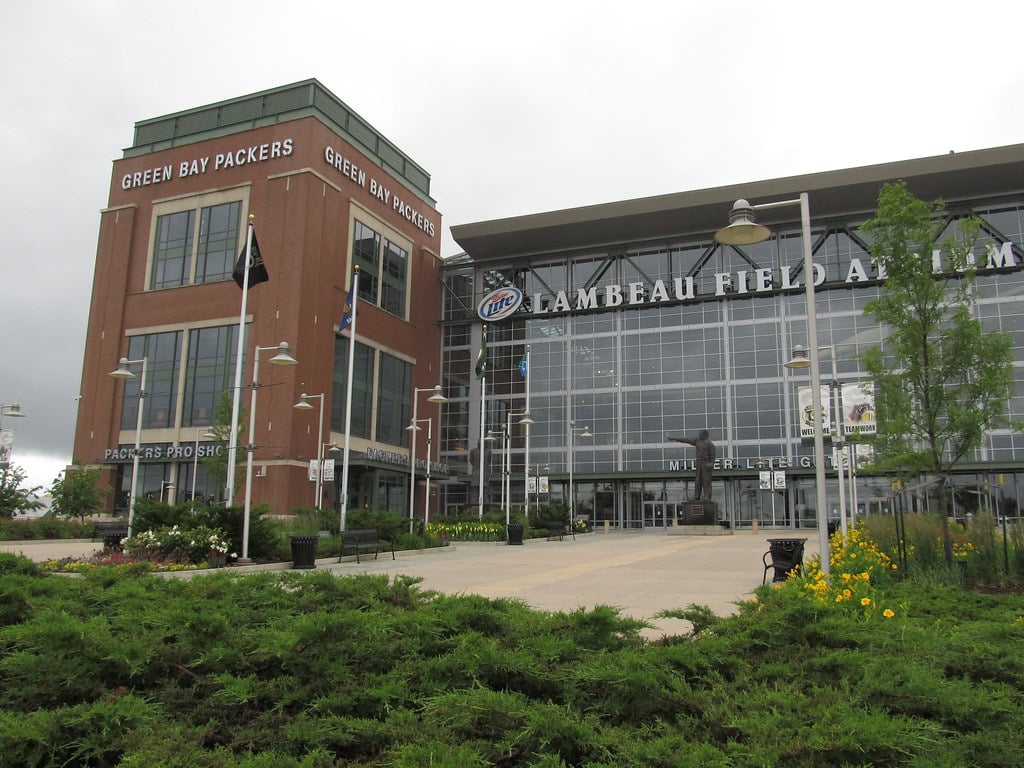
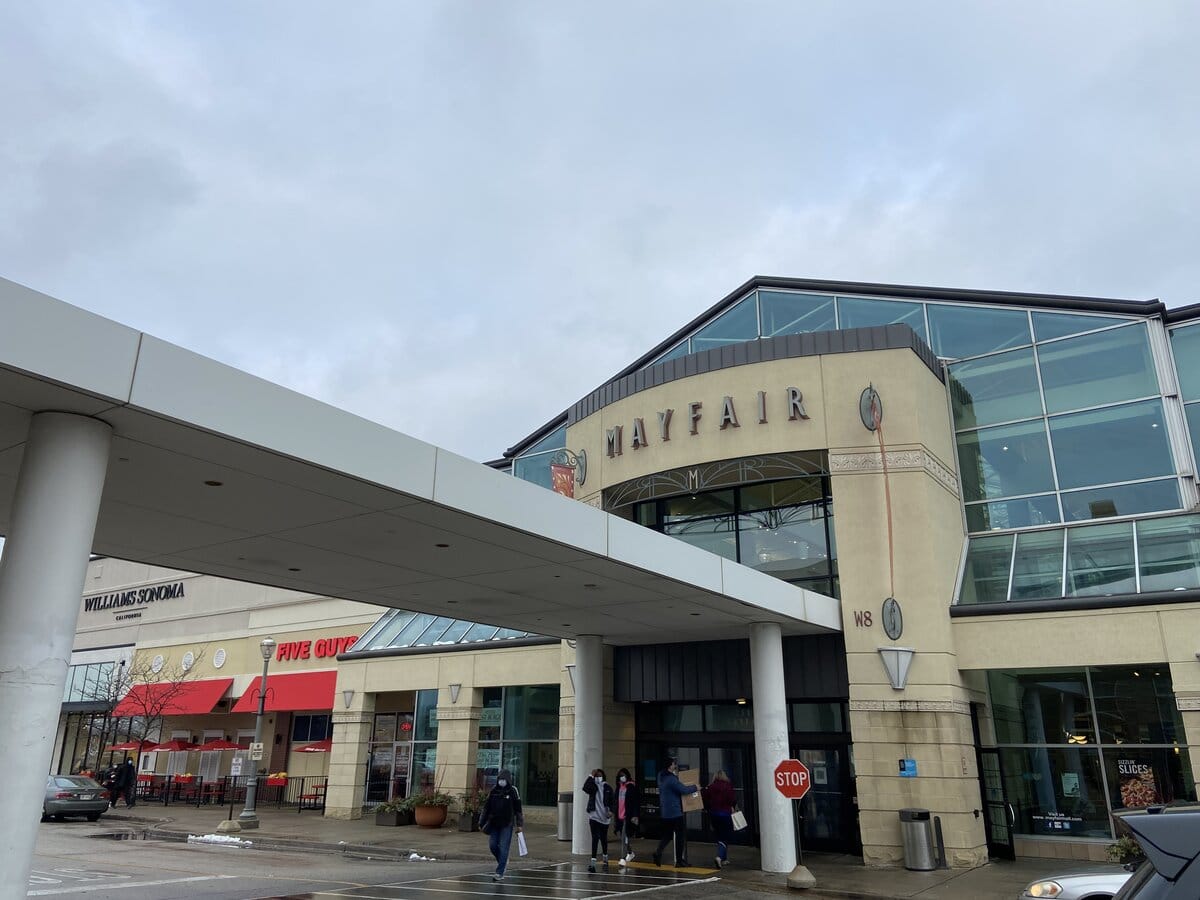
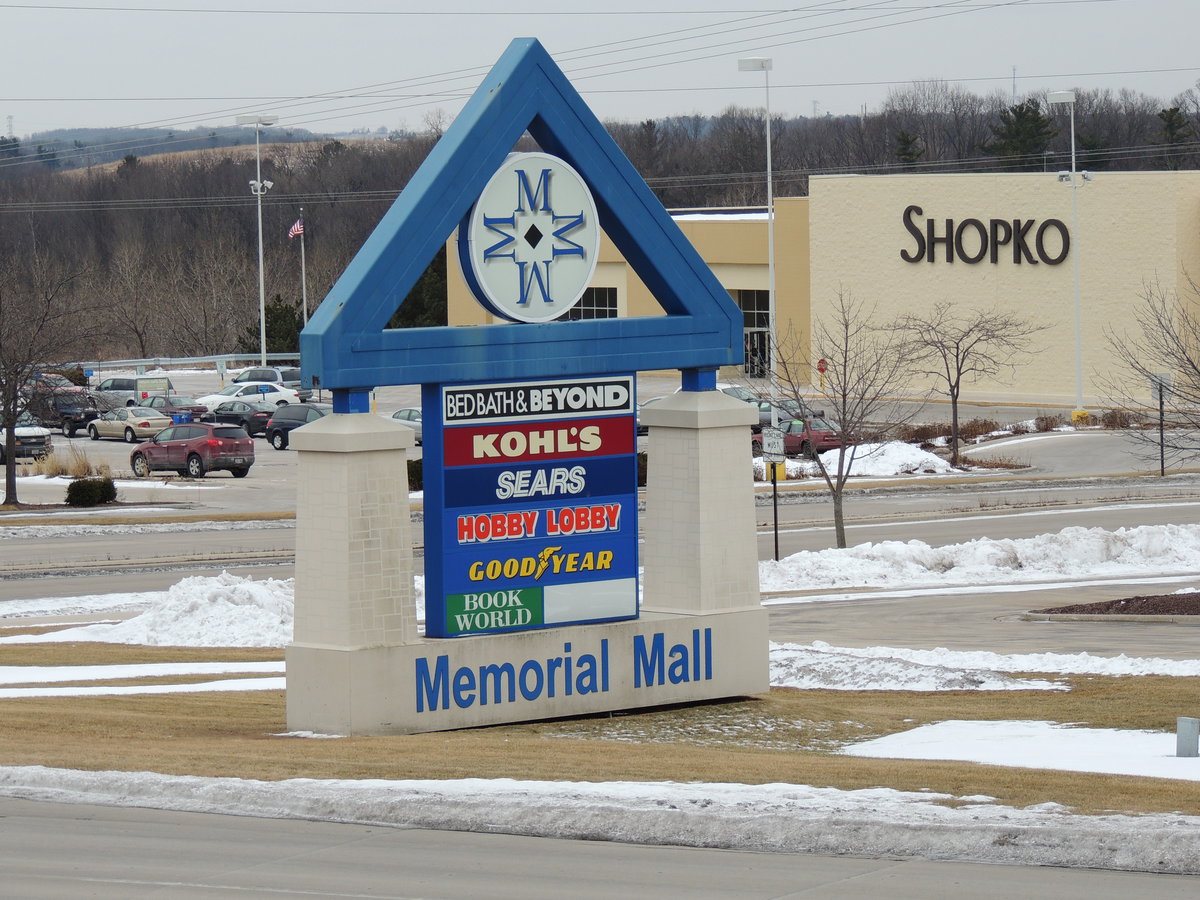
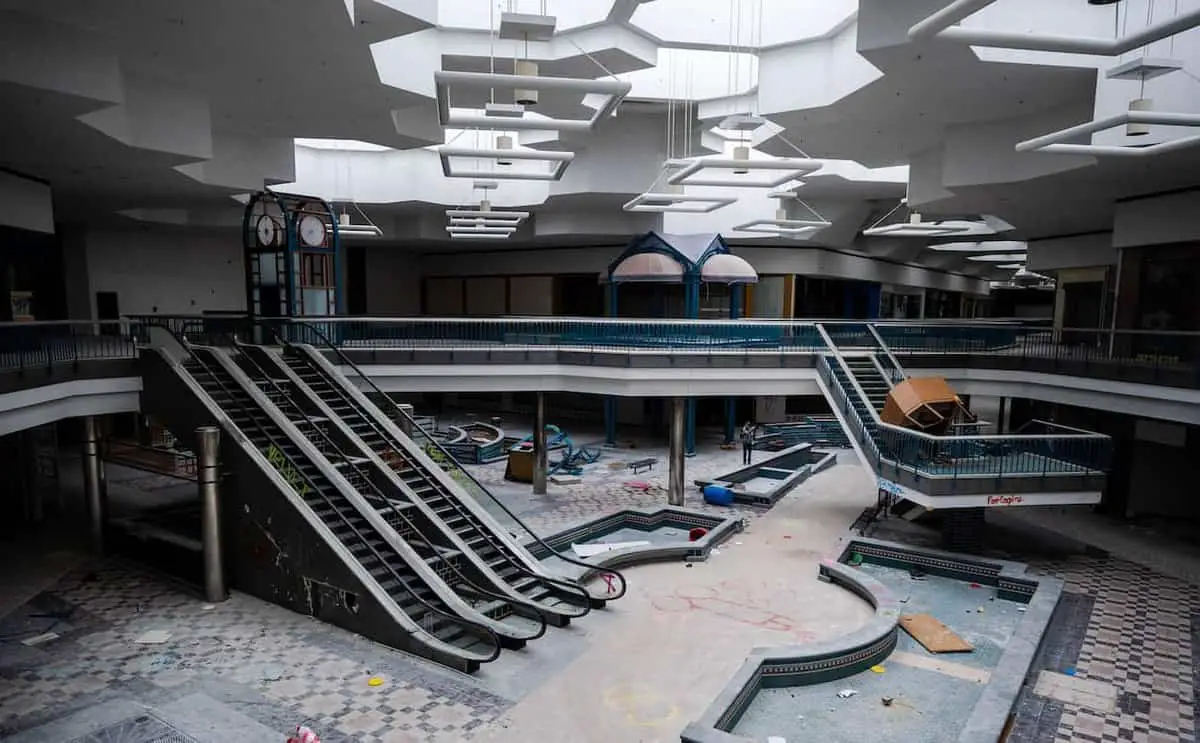
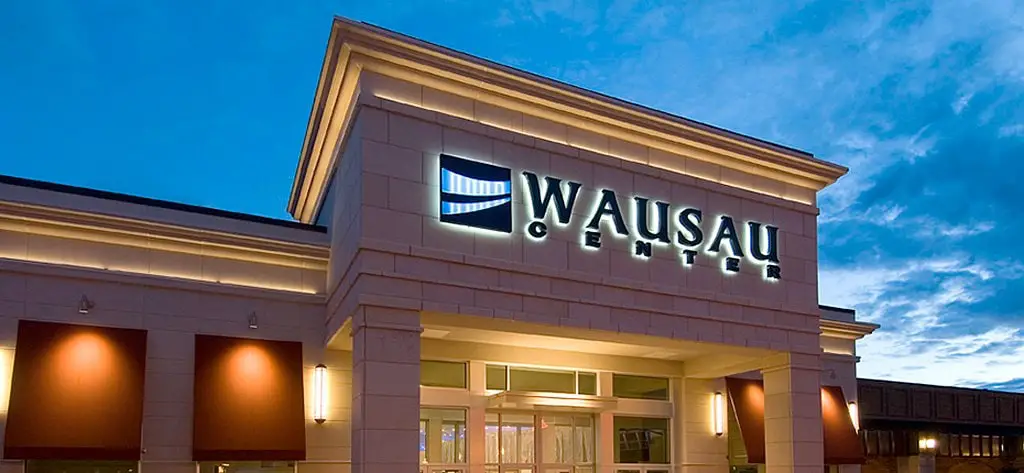
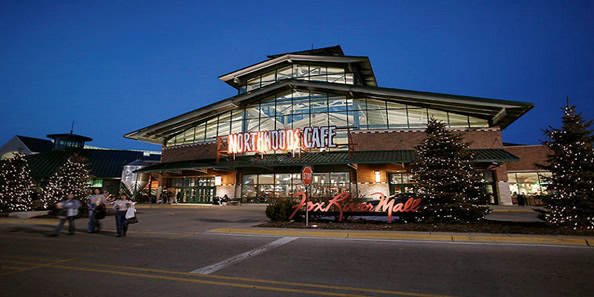
Don’t forget it’s a major crime area, blighted neighborhood and cleanup of both of those issues preclude any improvements
Appreciate you naming it directly. There's often talk of what Northridge "could" become but less attention to the conditions that block that path.